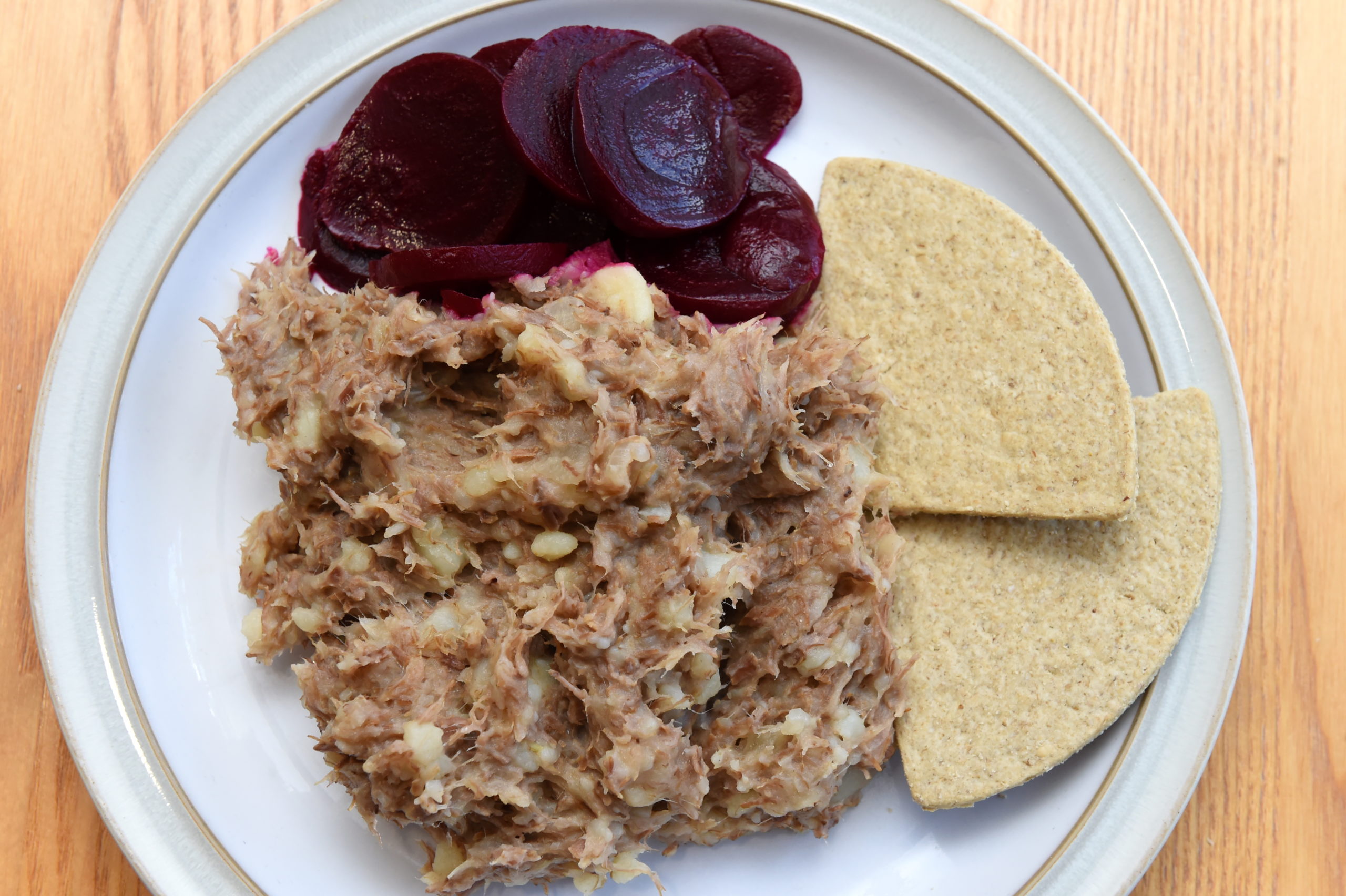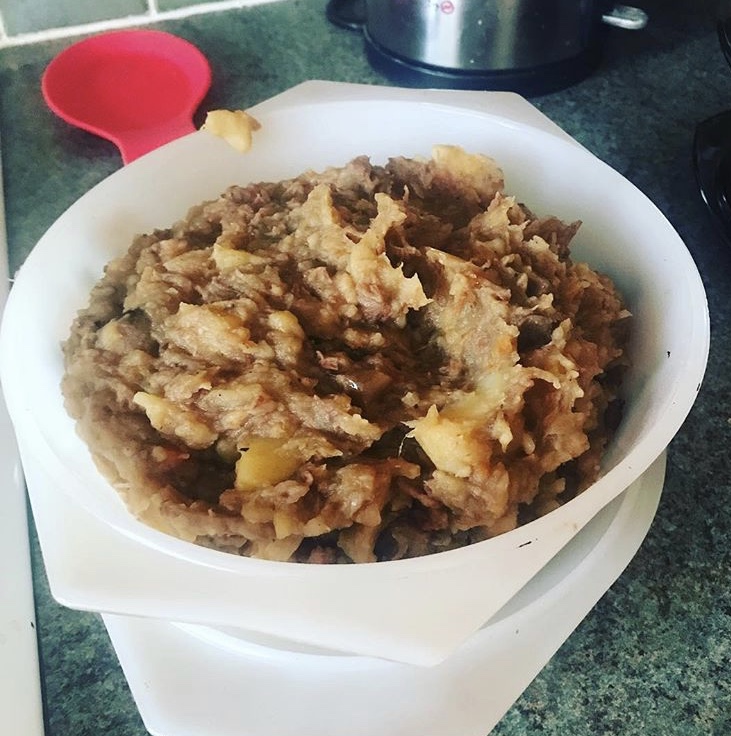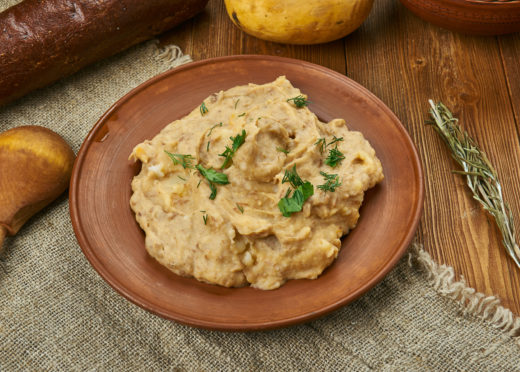Foodie Brian Stormont takes a look at the origins of this classic Scots dish, and shares his favourite recipe.
When it comes to food frugality and not wasting anything, very few cuisines come close to us here in Scotland.
We love to use every available part of anything we cook with, not only because it saves us money, but also because of the flavour enhancements you can create, as well as a tasty second dish from leftovers.
Take the humble, yet fantastic and moreish, plate of Stovies. For me it’s the ultimate comfort food, enjoyed all over the country – and probably by ex-pats the world over – yet it’s the subject of much debate.
Should you use butter or beef dripping? Which are the best potatoes to use? Do you base it around corned beef or the leftover remnants of a Sunday roast? Would you add baked beans to your Stovies or cover them in grated cheese or brown sauce?
These are all questions frequently raised if you are involved in a conversation about this fantastic creation.
Taken literally, the word Stovies means “from the stove”, although nowadays you can make them in your oven or slow cooker if you so desire. I know traditionalists are now shouting at the screen telling me that’s sacrilege.
There is very little to be found on the history of this fine dish, although it is believed that Stovies date back to the 19th Century originating simply from masters giving their servants the leftovers from the Sunday dinner from which they would then produce a tasty meal.

Recipes and ingredients vary from region to region and home to home, but the dish usually consists of potatoes and onions along with leftover roast, mince or even corned beef.
And if you believe you can make Stovies that rival the best, the World Stovie Championships take place every year at the Huntly Hairst Festival – which celebrates rural life.
The competition has been running for seven years and attracts Stovie makers from far and wide, keen to get their hands on the coveted trophy.
Laura McNeil of the Hairst said: “The championships are a popular part of the food festival. We started it because we wanted do something that was traditional to the area and something that no one else had done before.
“It has been going for seven years now and it is a part of the festival we are keen to build on and grow for the future and maybe become as big as the World Porridge Championships.
“The competition has been well received but there is definitely room to grow it into something bigger. As the festival is in September we remain hopeful that this year’s event will still go ahead, but we will have to wait and see.
“Entries we receive are mostly from locals, but we do attract some from further afield and our 2014 champion was actually the author Stuart MacBride. The 2019 World Stovies Championship winner was Don Graham a chef from Aberdeen.
“We have plans to grow the event this year with Stovies available for tasting and cooking demonstrations for inspiration all while viewing this year’s World Stovies Championships entries.”
Now, rightly or wrongly, I am firmly in the leftover beef camp when it comes to making my Stovies and I prefer to mix butter with oil rather than beef dripping or lard. You won’t find corned beef or baked beans anywhere near my Stovies.
Whenever we have a beef casserole or roast beef, there are always leftovers and my mind immediately factors in Stovies as a meal for later in the week.
And, apart from being something that will keep you full, and are ideal on a cold or wet day, Stovies need little preparation and a one-pot dish, thus saving on the washing up.
My recipe is simple, I love it and if you happen to be round my house on Hogmanay there’s always a pot on the hob that gets rave reviews.
Stovies
 Ingredients
Ingredients
(serves 4)
- Two large onions
- 1kg of potatoes or six or seven large ones, peeled (I prefer Maris Pipers because they make a fluffy and creamy mash, but King Edwards work well, too)
- Beef stock
- Leftover beef of any description
- Salt and pepper
Method
- Slice the onions and fry them in the oil and butter mixture slowly until the sugars in the onions begin to caramelise. That’s where your flavour starts and I have found it’s key to tasty Stovies.
- Cut your peeled potatoes into three or four chunks and put them in the pan and give them a good stir to mix them with the onions then add about 250mls of beef stock and stir until the mixture starts to bubble.
- Add in your leftover beef and stir to combine.
- Then add some water, probably just enough to sit just below the level of the potatoes, bring to the boil and turn down to a gentle simmer.
- Leave them to simmer for 40-45 minutes, stirring occasionally. By that time, the potatoes will be starting to turn into mash along with some chunky pieces. There will have been a lot of salt in your stock and leftover meat, but you will still need to check the seasoning. I love to add lots of freshly ground black pepper to mine.
- Serve in the way you like. Personally, I love bannocks with mine.

